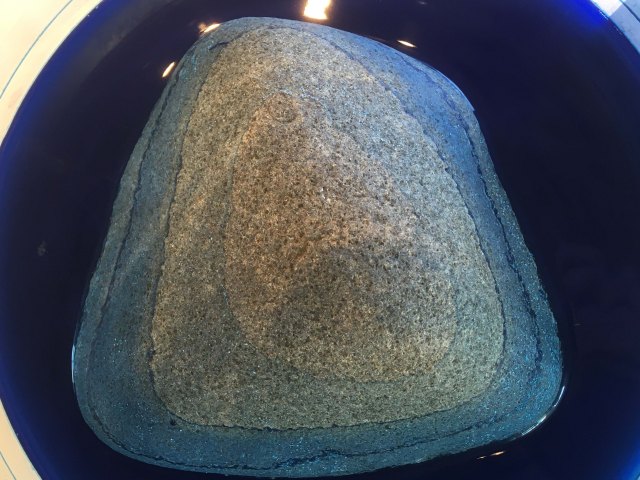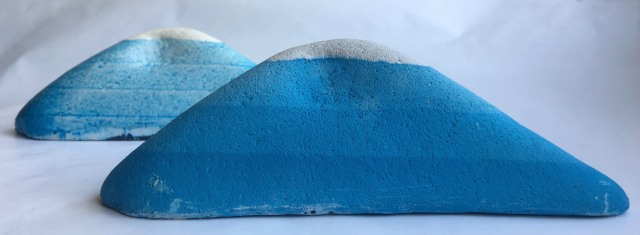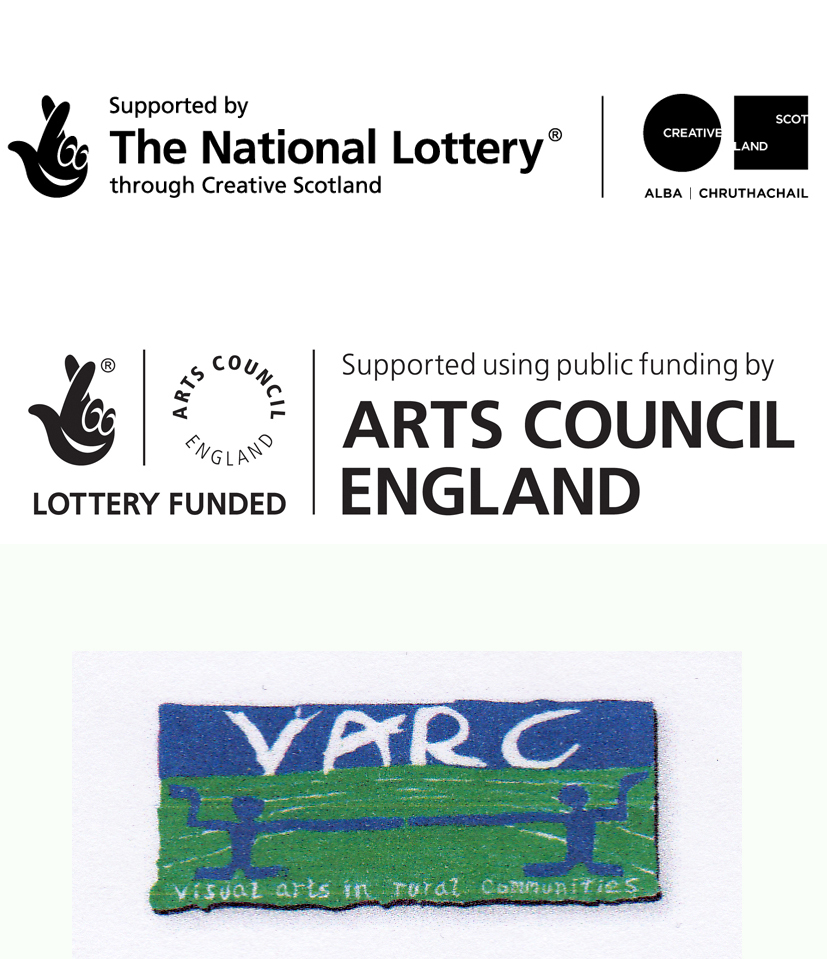hills may be imagined as inundated with water, and that every time the water falls…, a mark is run round the surface of the ground at the edge of the water…[1] Paterson, 1882  How do you explain what a contour line is? G. D. Burr’s advice was to “Procure a stone somewhat resembling a hill”[2]secure it in a box, pour in diluted Indian ink, then drain it off at intervals so the stone is marked by a series of tidelines: contour lines. I tried recreating his 1839 experiment, yet however precise some of his instructions were, too many important details were missing: type of stone? Ratio of water to Indian ink? Duration required before reducing the level? Numerous experiments later, the crucial element for guaranteed results is deciphered: leaving the stone overnight between levels.
How do you explain what a contour line is? G. D. Burr’s advice was to “Procure a stone somewhat resembling a hill”[2]secure it in a box, pour in diluted Indian ink, then drain it off at intervals so the stone is marked by a series of tidelines: contour lines. I tried recreating his 1839 experiment, yet however precise some of his instructions were, too many important details were missing: type of stone? Ratio of water to Indian ink? Duration required before reducing the level? Numerous experiments later, the crucial element for guaranteed results is deciphered: leaving the stone overnight between levels.  Three years later Basil Jackson described “a very ingenious and striking”[3] adaptation of Burr’s experiment whereby the stone was replaced by “a model in plaster of Paris representing some hilly ground”. From my own trials I know plaster provides an excellent surface for emphasising each ink-stained ring;
Three years later Basil Jackson described “a very ingenious and striking”[3] adaptation of Burr’s experiment whereby the stone was replaced by “a model in plaster of Paris representing some hilly ground”. From my own trials I know plaster provides an excellent surface for emphasising each ink-stained ring;  except in Jackson’s version ink isn’t used, the water is clear and: “At every successive fall of the water, he [Burr] traced lines on the model, indicating the curves shown upon its surface by the successive lowering of the water.” I tried recreating this version too, but ‘tracing’ with a sharp point tended to nudge the model, and ink (and charcoal and graphite) smudged in the water. To draw a steady clean line required a very wide shallow container, preferably on a turntable and a very particular pencil. In some respects, this iteration was an improvement, as now the experiment could be ‘performed’ for an audience.
except in Jackson’s version ink isn’t used, the water is clear and: “At every successive fall of the water, he [Burr] traced lines on the model, indicating the curves shown upon its surface by the successive lowering of the water.” I tried recreating this version too, but ‘tracing’ with a sharp point tended to nudge the model, and ink (and charcoal and graphite) smudged in the water. To draw a steady clean line required a very wide shallow container, preferably on a turntable and a very particular pencil. In some respects, this iteration was an improvement, as now the experiment could be ‘performed’ for an audience. Until I started my own versions of these experiments, I hadn’t realised the implications of the different techniques: ‘flooding events’ versus ‘traced lines’; that the latter lends a more ‘abstract’ diagram-like appearance to the model, this version of the experiment is the one advanced by Alfred Wilks Drayson in the 1860s.[4]
Until I started my own versions of these experiments, I hadn’t realised the implications of the different techniques: ‘flooding events’ versus ‘traced lines’; that the latter lends a more ‘abstract’ diagram-like appearance to the model, this version of the experiment is the one advanced by Alfred Wilks Drayson in the 1860s.[4]

W. H. Richards, 1884, fig.5
Yet, Burr’s original inky version retained the connection his students could make between contour lines and ‘real’ lines as seen in a landscape: receding tides deposit strata of seaweed or debris in a cove: ‘real’ contour lines are laid down before our eyes.[5] Had Burr ditched the stone for a plaster cast, retained the ink and emulated ‘flood’ rather than ‘ebb’ he could have ‘performed’ my version (that produces great results every time). Starting with inky water, subsequently adding only water, at 5min intervals, produces an attractive ‘hill’ ringed in tidelines of ever deeper hues suggestive of peering into the murky depths of a deep glacial lake. 
The two versions from the 1800s – the diagrammatic traced line and the pictorial ink-bathed one – proffered two competing views for the depiction of relief throughout the 1800s. Arguments for methodical, repeatable, diagrammatic ‘abstract’ lines, were pitted against those favouring ‘natural’, pictorial and realistic looking lines on maps: contour lines were put to use by both camps.
Stones and plaster models were in use throughout the 1800s to teach cadets to draw (contours) in the classroom; ideas for [re]creating these drawing processes are currently abroad… watch this space.


Pingback: The appearance of contour lines | The Great Lines
Pingback: Shading the land of perpetual evening sun | The Great Lines
Pingback: Walking Contours | The Great Lines